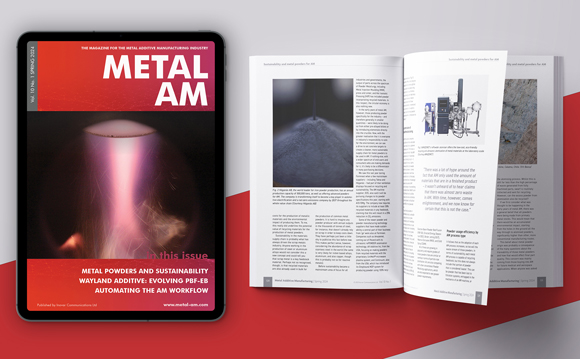EIT Digital launches its ‘Automation Support for Additive Manufacturing’ solution
July 28, 2019
EIT Digital IVZW, a digital innovation and education organisation headquartered in Brussels, Belgium, and supported by the European Institute of Innovation & Technology (EIT), has launched an ‘Automation Support for Additive Manufacturing’ solution designed to help make the process of additively manufacturing industrial end-use components easier and less expensive.
The ‘Automation Support for Additive Manufacturing’ solution is part of the ‘OEDIPUS High Impact Initiative’ project, which EIT Digital has supported along with partners Aalto University, Finland; Siemens, Germany, and DeskArtes, Finland, and which will reportedly make it easier and faster for companies to switch from conventional to Additive Manufacturing.
Niklas Kretzschmar, Aalto University’s project leader, stated, “At Aalto University we created a database with up-to-date relevant data for 3D printing of end-use components. The database contains comprehensive data including machines, materials, mechanical properties and accuracy levels required to print a certain component; also listing post processing steps and other factors. Consequently, this information and their theoretical connections were forwarded to Siemens to create knowledge graphs, linking this data logically with each other.”
According to EIT Digital, the result of the project is an ‘ontology of Additive Manufacturing,’ taking the form of a software add-on – a plugin that will be integrated and commercialised by DeskArtes as an extension to its AM data expert software. Using this plugin, the user need only specify size, material and surface characteristics or upload the CAD file of a certain component to receive all Additive Manufacturing alternatives automatically.
Kretzschmar added, “For instance, you want to investigate in printing a complex industrial component out of a specific metal alloy and the system would tell you which metal Additive Manufacturing process, machine and material type could ideally be used to address the user’s demands. In this context, the system additionally provides feedback on certain mandatory post-processing steps as well as optional measures that could be beneficial for you.”
The organisation states that in the past, to get the same results, in-depth manual research from the user was needed to access the related data and reach relevant answers. Due to the complexity of the process the consequence was all too often sub-optimal printings – meaning they were too expensive or did not conform to the product requirements.
With its solution, EIT Digital explains that the process has been largely automated with a minimised risk of mistakes by non-AM experts. The system is currently undergoing a pilot testing phase with three trial customers and is expected to be marketed to manufacturing, system development and service companies by the end of this year.
















